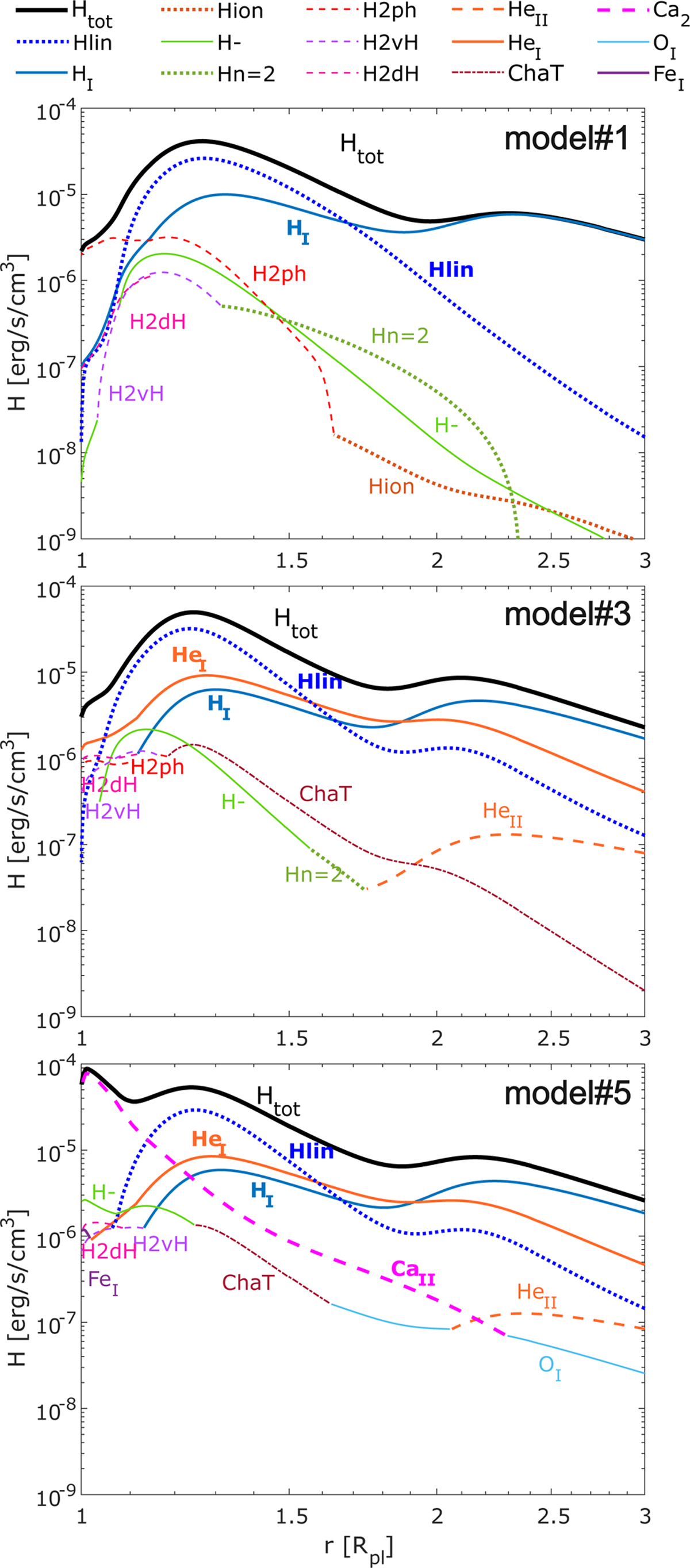Fig. 9

Download original image
Volume heating rates and their most relevant contributors (>5% of Htot at each specific r) calculated for the hot 5M⊕ sub-Neptune under moderate XUV irradiation. The top, middle, and bottom panels present the results of model#1 (pure hydrogen atmosphere), model#3 (hydrogen+helium), and model #5 (solar composition), respectively. The processes responsible for the heating and the corresponding line styles are given in the legend located above the top panel and with the following notation: Htot – total volume heating rate from all sources; Hlin – iso-sequence line heating; H i – heating due to photoionisation of atomic hydrogen; Hion – collisional ionisation heating (all hydrogen species); H- – H−-heating; Hn = 2 – photoionisation from all excited states of hydrogen species; H2ph – H2 photoionisation heating; H2vH – heating by collisional de-excitation of vibrationally excited H2; H2dH – heating by photodissociation of H2 ; He ii – photoionisation of Hen; He i – photoionisation of He i; ChaT – charge transfer heating; Can – metal line heating dominated by absorption of the Can line at 7291.47 Å; O i – photoionisation of O i; Fe i – photoionisation of Fe i.
Current usage metrics show cumulative count of Article Views (full-text article views including HTML views, PDF and ePub downloads, according to the available data) and Abstracts Views on Vision4Press platform.
Data correspond to usage on the plateform after 2015. The current usage metrics is available 48-96 hours after online publication and is updated daily on week days.
Initial download of the metrics may take a while.


